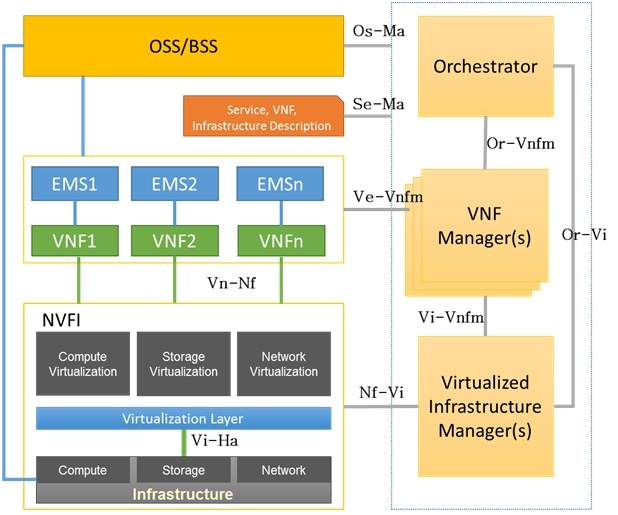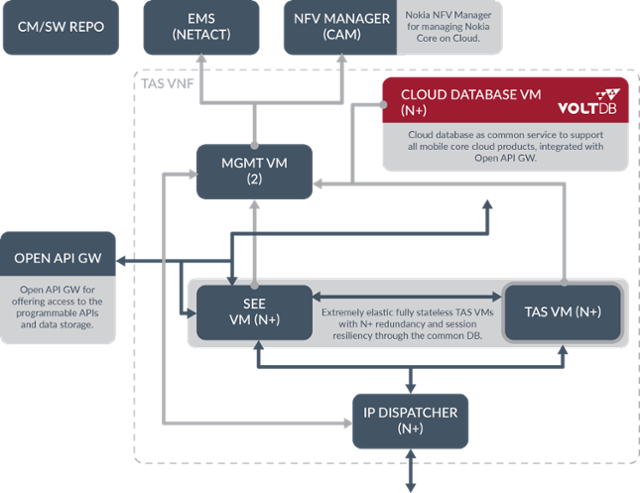Key Takeaways
- Innovation in telecommunications has been primarily driven by hardware vendors, leading to vendor lock-in and slow progress.
- The telecom industry is adopting cloud-enabled services and service-oriented architectures (SOA) to mirror the agility found in the software industry, leading to hardware commoditization and increased use of software.
- Software Defined Networking (SDN) and Network Function Virtualization (NFV) are gaining traction to modernize the telco industry, but challenges remain, including operational complexity and performance concerns.
- SDN can support NFV by enabling scalable policy enforcement and micro-services architectures, requiring a data-driven representation of policies and network metadata.
- Volt Active Data provides a scalable, low-latency distributed database solution for managing metadata in NFV environments, offering advantages over traditional databases and complex open-source alternatives; Nokia uses it in its OpenTAS platform to achieve 5G capabilities.
Innovation in the telecommunications industry has been led primarily by hardware vendors, offering differentiating capabilities to carriers. This has created an environment of vendor lock-in and staggered progress due to lack of agility. A side effect of this is equipment and infrastructure obsolescence at a rate that is not desirable for carriers. At the same time, a model that delivers agility in the software industry is emerging in cloud-enabled services and service-oriented architectures (SOA).
Historically, organizations rely on cross-pollination of innovative ideas across industries. When the telecom industry looked to replicate cloud enablement in the network functions space, a natural evolution in architectures arose. This evolution is seeing hardware commoditization, broader access to standards-based, well-known interfaces, and increased use of software to provide functionality formerly supplied in proprietary hardware platforms. The result, the emergence and adoption of the twin concepts of Software Defined Networking (SDN) and Network Function Virtualization (NFV), is gaining traction in the telecommunications industry.
According to standards body ETSI, the primary challenges that need to be addressed to modernize the telco industry are:
- Ensuring that virtualized functions are simpler to operate than what exists today
- Achieving high-performance virtualized network appliances without compromising portability
- Achieving co-existence with legacy systems while enabling a phased transition to a fully-virtualized environment
- Management and Orchestration (MANO) of virtual appliances
- Maintaining stability and service levels without degradation during load and relocation
- Since virtualization naturally affects the cloud and distributed computing, resilience to hardware and software failures must be improved
- Portability of appliances without the need for recompilation
- Allowing a design to render itself for future developments and standards
- Minimizing energy consumption.
ETSI proposed the following architecture, represented diagrammatically:

What is not apparent in this diagram, but becomes so on digging deeper, is that the right hand side, commonly referred to as MANO (VNF Manager, Orchestrator and Virtualized Infrastructure Manager) benefits immensely from the support of Software-Defined Network implementations. SDN can support NFV efforts by enabling a scalable implementation of policy enforcement and micro-services architectures for service chaining and traffic engineering, e.g., computing least-cost routing. These capabilities require a data-driven representation of policies, network metadata and route cost information. In this area, Volt Active Data assisted a number of telecom organizations implementing NFV in their respective premises.
Volt Active Data is a highly scalable distributed relational database purpose built for low latency, high throughput transactional workloads. Few industries require lower latency than telecom, and fewer still need to perform complex computations on every event that occurs in the data flow chain.
Micro-services architectures readily render themselves useful in NFV environments; often containerization comes up as the next topic of discussion. What becomes apparent very quickly is the need for separation of concerns between the infrastructure components (Compute, Storage and Network elements virtualization) and the metadata that has to be used to drive the policies and compute network traffic. Volt Active Data, a horizontally-scalable distributed database that performs at carrier grade throughputs and predictable latencies, becomes an automatic choice as the database to hold the metadata. In addition, as a unified database and single/multi event-processing layer, Volt Active Data is a great alternative to a complex, multi layer, hard to maintain, stitched together open source mélange of technologies like streaming engines and non-transactional data stores, which require separate cluster management software.
For these reasons, Nokia chose Volt Active Data as the underlying database in its OpenTAS (Open Telecom Application Server) platform. By choosing Volt Active Data as the Shared Data Layer, Nokia’s telco cloud is able to:
- Scale to meet unpredictable data traffic with a minimal data layer footprint
- Leverage Volt Active Data’s MPP architecture and transactional processing to keep processing closer to the data – in the database
- Reduce total cost of ownership compared to traditional databases while supporting predictable scalability.
With Volt Active Data, Nokia is uniquely positioned to deliver on the promise of 5G (ms latency and 10Gbps data rates) in its cloud and Internet of Things initiatives.
 To learn more about how your organization can leverage Volt Active Data for your NFV initiatives, please visit us at TC3 Summit on September 28, or feel free to reach out to us at info@voltactivedata.com.
To learn more about how your organization can leverage Volt Active Data for your NFV initiatives, please visit us at TC3 Summit on September 28, or feel free to reach out to us at info@voltactivedata.com.

